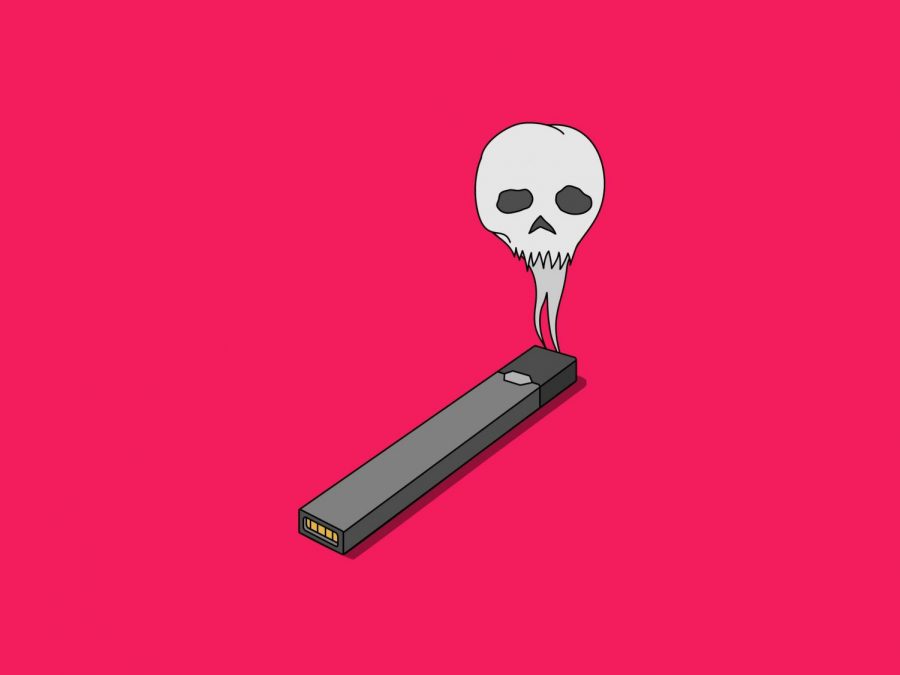Vaping: An Epidemic
Bad habits can be difficult to break, especially those involving nicotine. Nicotine comes from the plant of tobacco, first utilized as an insecticide in 1763 and later became classified as a poison by Dr. Wilhem Heinrich Posselt and chemist Karl Ludwig Reinmann. Humans have been smoking tobacco and nicotine-infused cigars and cigarettes since the early 1600s but not realizing the seriousness of damage the plant can cause to the human body until the late 1800s. Nicotine is not only a sedative but also a stimulant, increasing the addiction rate. The U.S. Surgeon General did not issue an FDA approved warning, suggesting a connection between smoking and lung cancer as well as heart disease, until 2009. The delay in development gave the human race time to become dependent on this harmful drug.
A quick addiction sparked across the United States, and the tobacco industry was at the top of the market for several years. People enjoyed smoking or chewing tobacco with friends or on a break from a day of work. The effects of the use of tobacco products later took a toll on these bodies. According to Medical News Today, smoking “leads to over 480,000 deaths in the country per year, and over 16 million people in the U.S. are currently living with a disease caused by smoking.” In addition, the World Health Organization (WHO) reported that, “over one billion people are regular tobacco smokers.” These numbers are very large in comparison to the population.
When recognizing something as a bad habit or addiction, a natural instinct would be the desire to break it or reduce it. In order to do so, products can be developed to aid this. In recent years, nicotine gum, lozenges, patches and inhalers have been introduced to those struggling with addiction. Another invention brought to the market was an e-cigarette, first introduced by Joseph Robinson in 1927 but not becoming marketable until 1963 by Herbert Gilbert. In the past year or two, vaping and Juuling, both liquid nicotine products, have sky-rocketed on the market. While the new products may seem better, they are still bad for one’s health. In fact, the chemicals found in e-cigarettes cannot all be identified, making it difficult for one to know the effects and safety risks. Vaping is just as addictive as smoking a cigarette, possibly even more addicting due to the ability to increase the amount of nicotine in the pods.
The use of e-cigarettes, as reported by the U.S Surgeon General, has “increased by 900 percent” among high school students. The advertisements put on by the companies lead teenagers to believe vaping is less harmful than smoking, influencing young children to try the products. There has been a sudden backlash against these products in the past few months, creating an uproar with health scares. The Center for Disease Control and Prevention stated there are, “450 possible cases in 33 states” and “215 confirmed cases” involving hospitalization of teenagers linked to vaping. Patients reported having difficulty breathing, chest pain and vomiting, all resulting from severe lung damage. Six deaths thus far have been concluded by the effects of vaping. A recent study done by Yale and Duke University announce the chemicals with the vapor, “[irritate] the lungs and can cause damage when inhaled.” Experts are warning about the widespread epidemic and are suggesting the nicotine ingestion may also affect the heart and other arteries\; they are warning against the use of any nicotine products at this time.

Aly is 3 year member of the Crimsonian Staff. She is Head Tutor of Camp Imagine If, Class of 2020 Secretary, Club for International Awareness member, a...






